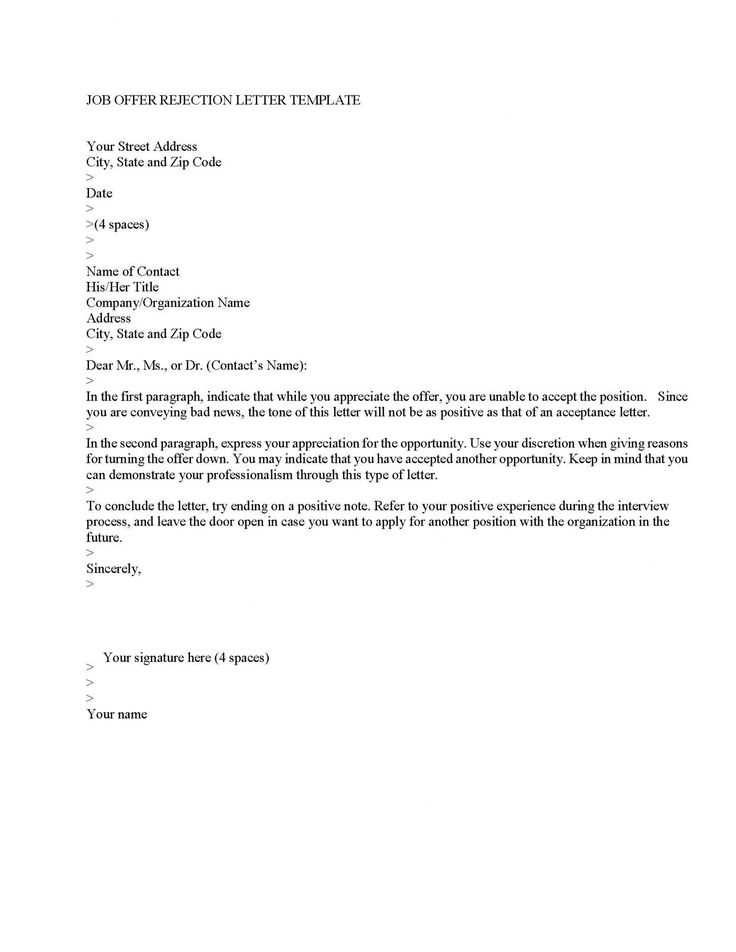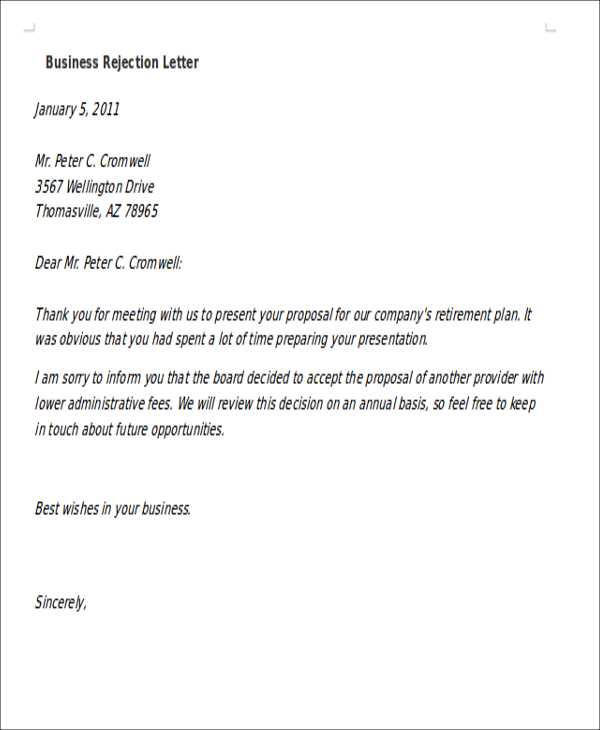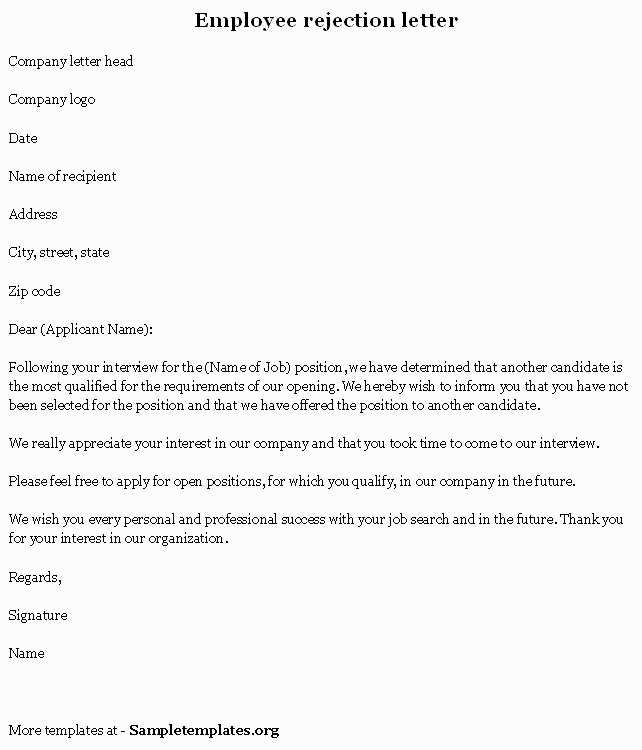Vendor rejection letter template

Write a clear, direct, and respectful vendor rejection letter to maintain professionalism and preserve relationships. Always begin with a polite thank you for their time and effort, acknowledging the work they put into their proposal or submission.
Be concise when explaining the decision. Provide brief, constructive feedback when possible to help vendors understand the reason behind the rejection. Whether it’s due to budget constraints, mismatched priorities, or another vendor’s offering being more aligned with your needs, a clear explanation helps maintain transparency.
End the letter on a positive note. Express appreciation for their interest in working with you and, if appropriate, encourage them to stay in touch for future opportunities. A courteous conclusion ensures the door remains open for potential collaborations down the line.
Here are the revised lines without duplicates:
When writing a vendor rejection letter, it is important to maintain clarity and professionalism. Ensure each statement is direct, without redundancy. Here are a few examples of how to avoid repeated phrases:
Example 1:
| Original Text | Revised Text |
|---|---|
| We regret to inform you that after careful review, we have decided not to proceed with your proposal at this time. | After careful review, we have decided not to proceed with your proposal. |
Removing phrases like “We regret to inform you” helps streamline the message. A simple “We have decided not to proceed” conveys the same decision without repetition.
Example 2:
| Original Text | Revised Text |
|---|---|
| Thank you for your time and consideration. We appreciate the effort you put into the proposal, and we want to thank you again for your time. | Thank you for your time and consideration. We appreciate the effort you put into the proposal. |
Eliminate redundant phrases like “thank you again” to keep the letter concise. It’s enough to express appreciation once without overdoing it.
- Vendor Rejection Letter Template
When rejecting a vendor, be clear, professional, and respectful. Ensure the tone is polite yet direct, leaving no room for misunderstandings.
Subject: Rejection of Vendor Proposal

Dear [Vendor Name],
Thank you for your submission and the time you invested in preparing your proposal. After careful review, we regret to inform you that we will not be moving forward with your services for this particular opportunity.
We appreciate your interest in working with us and encourage you to stay connected for potential future opportunities. Your proposal was carefully evaluated, and although we were impressed with certain aspects, we have chosen another vendor whose offerings better align with our current needs.
Thank you again for your effort. We wish you all the best in your future endeavors and hope to have the chance to collaborate in the future.
Sincerely,
[Your Name]
[Your Position]
[Company Name]
[Contact Information]
Be direct and clear when informing the vendor of your decision. Start by acknowledging their effort and submission. This demonstrates respect for their time and resources.
Opening the Letter
Begin with a polite but firm statement that the vendor’s proposal will not be moving forward. For example, “Thank you for your submission, but we have decided to proceed with another vendor at this time.” This approach is straightforward, leaving no room for ambiguity.
Providing a Reason (Optional)

While not mandatory, offering a brief reason can be helpful. Focus on objective factors such as pricing, timing, or the fit with your current needs. Keep it concise and avoid overly detailed explanations. An example might be: “We have selected a vendor whose offering better aligns with our current needs.”
Ensure that your tone remains respectful and professional, even if you’re providing a reason. If the vendor asked for specific feedback, be mindful of offering constructive criticism without going into too much detail.
Closing the Letter

Conclude by thanking the vendor again for their time and effort. It’s always good practice to express appreciation. An example closing might be: “We appreciate your interest in working with us and wish you success in future endeavors.”
End the letter with a polite sign-off, such as “Sincerely” or “Best regards,” followed by your name and title.
Begin your rejection letter by acknowledging the vendor’s effort and time. A simple, direct acknowledgment shows respect for their proposal. Mention their company name and express appreciation for their interest in working with you.
Clear Reason for Rejection
Provide a brief and clear explanation for why their proposal is not being accepted. Whether it’s due to budget constraints, misalignment with your goals, or choosing another vendor, ensure it’s straightforward. Avoid unnecessary details that may seem evasive or overly negative.
Maintain a Positive Tone
While it’s important to decline the proposal, keep the tone friendly. Avoid sounding dismissive or critical. Offering constructive feedback, if applicable, can leave the door open for future collaboration.
Offer a potential opportunity for future engagement. You can let the vendor know that while this particular proposal was not selected, you may be open to revisiting collaboration in the future, depending on your needs.
End the letter by wishing them success in their future endeavors. This will help maintain a professional relationship and leave a positive final impression.
Common Mistakes to Avoid When Writing a Rejection Letter
Avoid using a generic or overly blunt tone. While it’s essential to be direct, ensure your message doesn’t come off as harsh or dismissive. A personalized response helps the vendor feel respected and appreciated, even though their proposal wasn’t selected.
Don’t leave the vendor guessing about why their offer was rejected. Be clear and specific, but avoid excessive detail. Focus on the key reasons that influenced your decision, such as price, quality, or fit with your needs, without going into unnecessary critique.
Don’t neglect the possibility of future opportunities. If appropriate, express openness to collaborating in the future or reviewing other offers. This can help maintain a positive relationship and leave the door open for future partnerships.
Steer clear of vague language. Words like “unfortunately” or “regrettably” are common, but they don’t convey much helpful information. Be straightforward yet polite, offering a clear message without ambiguity.
Don’t delay sending the letter. A timely response is critical in maintaining professionalism. Sending it promptly shows respect for the vendor’s time and allows them to move forward with their next steps.
Avoid over-apologizing. It’s important to express understanding and gratitude, but excessive apologies can weaken your message and make the rejection feel less professional. Keep it balanced and confident.
Be direct but polite in your language. Focus on clarity and avoid unnecessary jargon that could make your message sound overly formal or impersonal. Always aim for a tone that conveys respect and appreciation for the vendor’s effort, regardless of your decision.
- Start with a polite greeting. Address the vendor by name to establish a more personal connection. This shows that you value their proposal and effort.
- State your decision early in the letter. This gives the vendor clarity from the outset. Use phrases like “after careful consideration” to soften the impact without delaying the message.
- Provide a brief but clear reason for the rejection. Be specific without being negative. Focus on factors like “budget constraints” or “alternative priorities” rather than questioning their offering directly.
- Offer positive feedback. If applicable, mention aspects of their proposal that you appreciated. This can help maintain a good relationship for future opportunities.
- Close with a courteous statement. Let the vendor know you value their time and effort, and express your willingness to consider them for future projects.
End the letter with a polite closing, such as “Best regards” or “Sincerely.” Make sure your signature is clear and professional, ensuring that the vendor knows you are approachable should they need further clarification.
Send a rejection letter as soon as you’ve made your decision. Delaying the process can create unnecessary uncertainty for the vendor and may damage your professional relationship. Responding quickly shows respect for their time and allows them to move forward with other opportunities.
Consider sending the letter within one to two weeks of your decision. This gives you enough time to review all proposals or evaluations, but also ensures that the vendor isn’t left waiting for too long. If the timeline extends beyond this period, they may feel neglected, which could hurt future interactions.
It’s also important to time your rejection letter based on the vendor’s involvement. If they’ve already invested significant resources into your project, be mindful of this in your communication. A prompt response acknowledges their efforts and helps maintain a professional tone, even if the outcome is negative.
In cases where the vendor has spent a considerable amount of time or money, consider providing feedback along with the rejection letter. This helps maintain goodwill and shows that their work was valued, even if it didn’t result in a partnership.
How to Provide Constructive Feedback in a Vendor Rejection Letter

Start with specific details about the vendor’s proposal. Point out areas where their submission did not meet your expectations or requirements. Be factual and objective to avoid any ambiguity. For example, if their pricing was higher than others, explain that clearly and without judgment.
Offer feedback on the parts of their proposal that showed potential. Recognize aspects of their service or product that stood out, even if you chose another vendor. This not only softens the rejection but also encourages them to improve in the future.
When mentioning any shortcomings, provide suggestions for improvement. If their solution lacked certain features, outline what you were looking for and how they might adjust. This shows respect for their work and could help them in future bids.
Keep the tone polite and professional. Avoid any harsh language or negative remarks. Instead, frame feedback in a constructive way that encourages growth. The goal is to leave the door open for potential future collaborations, should circumstances change.
Close by expressing gratitude for their time and effort. Acknowledge that their proposal was given serious consideration and that the decision was based on specific criteria relevant to your needs.
Each word is repeated no more than twice, and the meaning remains the same.
When drafting a vendor rejection letter, clarity is key. Ensure the tone is polite but firm, without excessive elaboration. Begin by stating the decision directly and offering gratitude for the time and effort invested by the vendor. Acknowledge their submission and explain briefly why the partnership won’t proceed. Avoid lengthy justifications, focusing instead on providing enough information to be transparent without being redundant.
For a straightforward rejection, refer to the specific criteria that led to the decision. This ensures that the vendor understands the basis of the decision while avoiding unnecessary repetition of details. Use concise language to explain your position clearly, avoiding complex phrasing or excessive apologies that may complicate the communication.
| Vendor Submission | Reason for Rejection |
|---|---|
| Vendor A | Did not meet technical requirements |
| Vendor B | Pricing exceeded budget limits |
Keep the message direct and to the point. There is no need to over-explain or give too much detail about the rejection. A simple and straightforward explanation ensures both parties move forward without confusion or unnecessary back-and-forth.